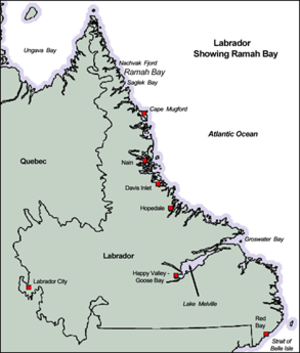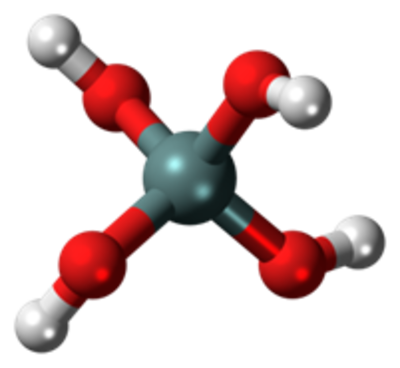With this issue of Chem 13 News, we have the first in a series of articles on chemistry in northern Canada, focussing specifically on the Inuit context. The unique Inuit life and culture has developed experimentally over thousands of years in response to the challenges of limited material and food resources. And now life is being impacted by new material additions to daily lives (including pollutants).
Chemistry, like all sciences, depends upon definitions. For our own studies, we see the definition of Inuit Chemistry as being: “The molecular basis underlying aspects of traditional and modern Inuit life and culture together with that of the northern environment.” It is our hope that this series will make chemistry more appealing and specifically relevant to Inuit youth and also to all Indigenous youth throughout Canada. We hope, too, that all Chem 13 News readers will be interested in how chemical principles apply to life in the Canadian north.
If you travel to the far north of Labrador, you will find a mine: no, not the mine at Voisey’s Bay, site of one of the world’s richest nickel deposits, but way farther north at Ramah Bay (Fig. 1). One difference is that the mine (or more accurately, quarry) at Ramah Bay was first being worked at least 7,000 years ago. What was so prized was a specific type of the mineral, chert.1 Chert was first excavated at Ramah Bay (Fig. 2) by the Maritime Archaic peoples (ca. 7,000 to 3,500 years ago); then by the Dorset Paleo-Inuit (ca. 2,200 to ca. 600 years ago); and finally, by the ancestors of the modern Innu.
FIGURE 1
Location of Ramah Bay, Labrador
Credit: https://www.heritage.nf.ca/
articles/environment/landscape-ramah-chert.php

FIGURE 2
Ramah Bay quarry
Credit: https://www.pc.gc.ca/apps/
dfhd/page_nhs_eng.aspx?id=14192

In a previous contribution to Chem 13 News,2 we contended that indigenous students would become more interested in chemistry if they could perceive the links between chemistry and their traditional ways of life and culture. In Ramah Bay chert, there is such a link.
All chemists are familiar with silicon dioxide, which, following melting under extremes of temperature and pressure, crystallizes to form the hard mineral, quartz. Less-commonly known are the aqueous marine deposits of silicon dioxide, generically named chert. Chert consists of beds of compressed microcrystalline silicon dioxide together with small proportions of other minerals.3 Within the microcrystals, the atoms are arranged in the standard network-covalent diamond-type silicon dioxide structure with silicon atoms tetrahedrally bonded to four oxygen atoms in an infinite lattice (Fig. 3).
 FIGURE 3
FIGURE 3
Ball-and-stick representation of part of the network
covalently bonded structure of silicon dioxide.
Credit: https://commons.wikimedia.org/
wiki/File:Beta-quartz-CM-2D-balls.png
Chert was prized by peoples around the world. In fact, chert is one of the 50 substances chosen in the book: Fifty Minerals that Changed the Course of History.4 The mineral was exceptionally useful to early humans for two reasons. First, it is hard, with a hardness of seven on the Mohs scale. Second, it conchoidally5 fractures upon impact; that is, it flakes to give sharp-edged tools.
|
Bond |
Bond strength kJ·mol-1 |
|---|---|
| O-O | 142 |
| Si-O | 452 |
| Si-Si | 222 |
In Ramah Bay, there are beds of chert varying in thickness from one metre to three metres. Artifacts made from Ramah Bay chert are found throughout Labrador, and as far away as Quebec, Ontario, Maine, Massachusetts, Vermont, Rhode Island, New York, and even Maryland, Virginia and Michigan. A Ramah chert arrowhead was even found at a Norse settlement at Sandnes in Greenland. The earliest Ramah chert artifact so far identified is approximately 7,500 years old. It was found at a Maritime Archaic peoples burial mound, at L’Anse Amour in southern Labrador, over 1,000 km south of Ramah Bay.
There are chert deposits in many places, so why was Ramah chert so highly prized? The answer lies in its exceptional purity of composition and also with its unique colour (hence its ease of identification). Ramah Bay chert has a semi-translucent appearance, near to colourless, usually with dark bands. Chemically, it is 97 to 99 per cent pure silicon dioxide, the small impurity being mostly iron(II) disulfide, FeS2.1 Being so pure, the formed chert arrowheads and knives had no structural weaknesses as would happen if they had inclusions of other compounds.
Most chert formations were deposited from the silicon dioxide skeletal remains of tiny marine organisms from about 500 million years ago onwards. However, Ramah Bay chert dates back to at least 1.9 billion years ago. The chert was therefore not biogenic in origin, but purely inorganic. In what way could thick beds of such an insoluble substance have formed? Under extremes of pressure and temperature, silicon dioxide dissolves in superheated water to form silicic acid, simplistically represented as H4SiO4 and its conjugate base, H3SiO4−.
In fact, solubility of silicon dioxide (as silicic acid) in water increases from 6×10-3 g per kg of water at 20 °C to 7 g per kg at 300 °C.7
Nearly two billion years ago, the crust was much hotter than it is today, so such near-surface solubilisation is easier to consider. The exceptional purity of the silicon dioxide in the chert would suggest that it was a result of solubilisation of a pure quartz intrusion in the igneous rocks under that segment of the then-seabed. Escape of the hot, pressurized saturated silicic acid solution through vents, much like the mid-ocean vents of today, would result in extremely rapid cooling and immediate precipitation as microcrystals:
H4SiO4(aq) —› SiO2(s) + 2 H2O(l)
Subsequent burial under seafloor sediments and the ensuing compression would produce this almost-pure, layered, silicon dioxide of Ramah Bay.
FIGURE 4
A piece of worked Ramah Bay chert.
Credit: http://www.avataq.qc.ca/en/content/
view/full/2220/(page)/1)

FIGURE 5
Ball-and-stick representation of silicic acid.
Credit: https://en.wikipedia.org/wiki/Silicic_acid#/
media/File:Orthosilicic-acid-3D-balls.png
When the Thule Inuit (ancestors of the present Inuit) came to occupy the coast about 700 years ago, they preferred nephrite, slate or whalebone for their harpoon heads and cutting needs, as did their descendants, the modern Inuit. Nephrite and whalebone are workable substances as a result of their very different chemical structures from that of chert2 enabling precise manufacturing of an artifact, rather than relying upon fracturing, as with chert.
For the readers’ information, Kijigattalik – the Ramah Bay Quarries – is now a National Historic Site within Torngat Mountain National Park.
Acknowledgement
Dr. Scott Neilsen, anthropologist of the Labrador Institute of Memorial University, North West River, Labrador, provided helpful comments. Marelene Rayner-Canham is thanked for critical readings of the draft versions.
References
- The comprehensive study on Ramah Bay chert: Ramah Chert: A Lithic Odyssey; Curtis, J.E.; Desrosiers, P.M., Eds.; Avataq Cultural Institute, 2017.
- Rayner-Canham, G.; Taylor, R.; Lee, Y.-R. Making Chemistry Relevant to Indigenous Peoples. Chem 13 News, February 2016, 10-12. https://uwaterloo.ca/chem13-news-magazine/ february-2016/feature/making-chemistry-relevant-indigenous-peoples.
- See, for example: Wikipedia. Chert. wikipedia.org/wiki/Chert (accessed 2018-01-20). https://en.wikipedia.org/wiki/Silicic_ acid#/media/File:Orthosilicic-acid-3D-balls.png.
- Chaline, E. Fifty Minerals that Changed the Course of History; Firefly Books, 2012, 176-181. The book calls the mineral ‘flint’, not its correct name of ‘chert’. Flint is a sub-category of chert.
- For a definition of this term, see: Wikipedia. Conchoidal fracture. https://en.wikipedia.org/wiki/Conchoidal_fracture.
- The strength of the Si−O bond suggests that it has significant multiple-bond character.
- Fournier, R.O.; Potter, R. W. An equation correlating the solubility of quartz in water from 25° to 900° at pressures up to 10,000 bars. Geochimica et Cosmochimica Acta 1982, 46, 1969-1974.
Publisher's note: This article is a reprint from the September 2018 issue of Chem 13 News. This article has had its title updated to reflect modern descriptions of Inuit peoples.







